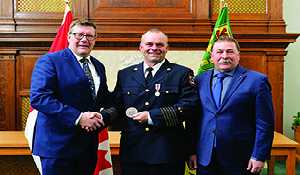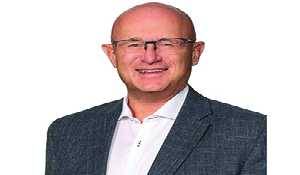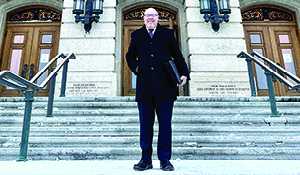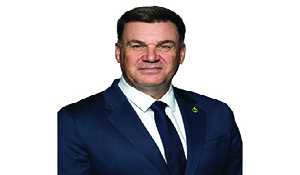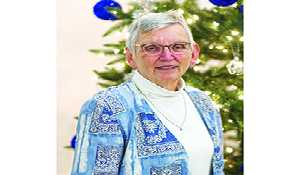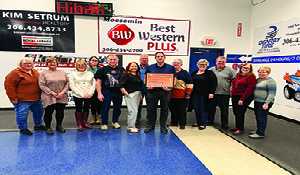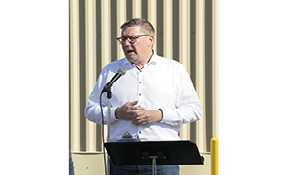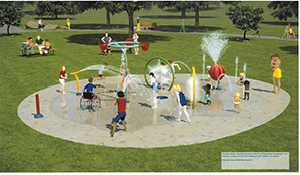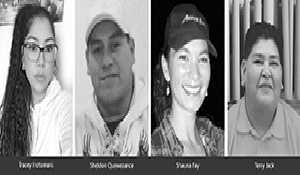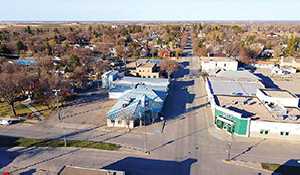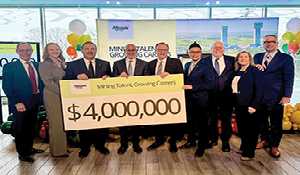Harvest of Hope gives $8,500 to Food Share
December 8, 2023, 11:03 am
Joey Light
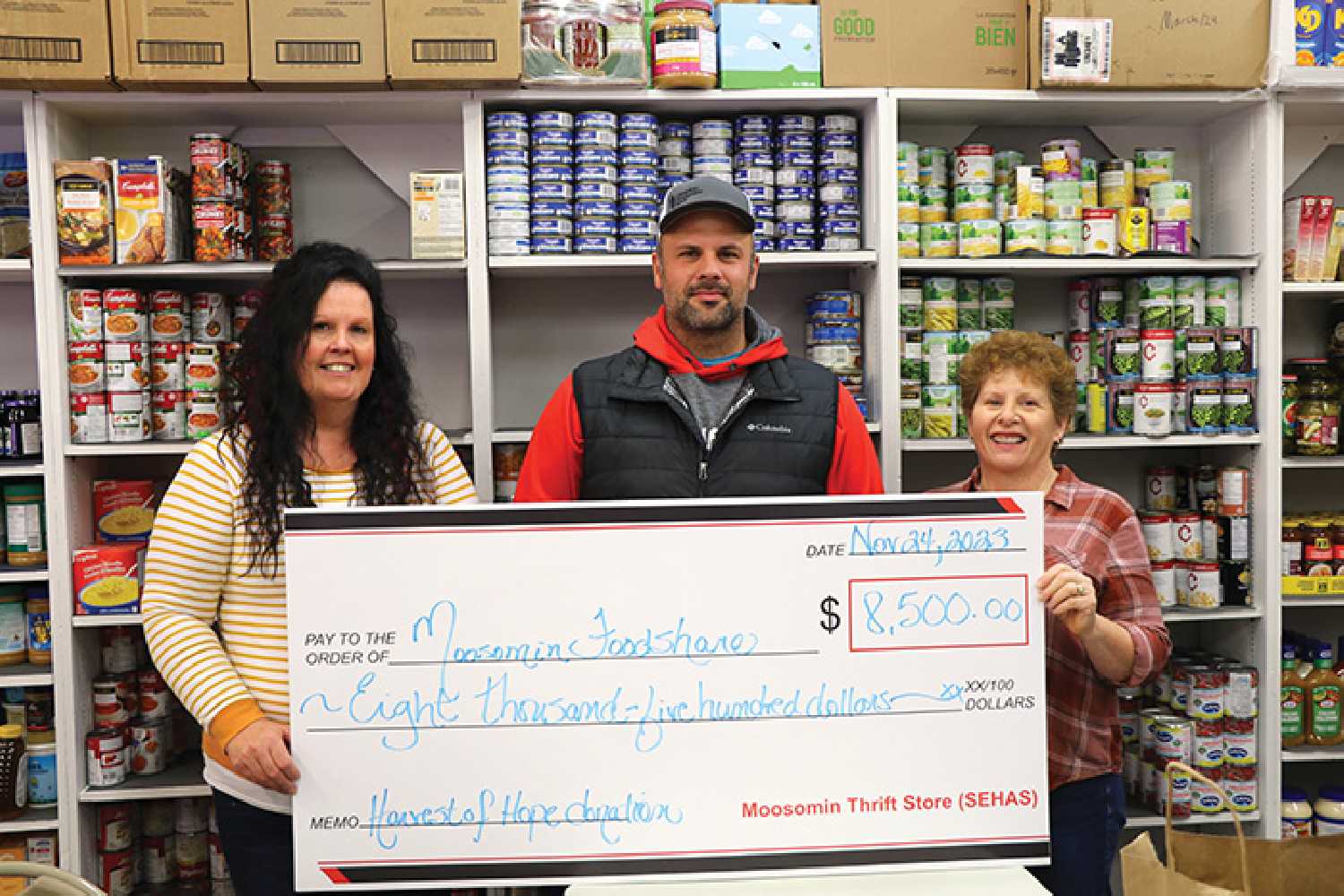

Thanks to a lot of volunteer labor and a lot of donations, Harvest of Hope made $45,000 this year in net revenue and plan on donating $8,500 to the Food Share in Moosomin and another $2,400-$2,500 to the Rocanville Food Bank, and the remaining balance goes to the Canadian Foodgrains Bank, based in Winnipeg, which helps feed the world’s most vulnerable people.
Kyle Penner of the Harvest of Hope committee says this is the second year the group has decided to support the local food banks as well as addressing world hunger through the Canadian Foodgrains Bank.
“We started this (supporting the local food banks) last year. With the pandemic and the pressure and food prices, there was a lot of concern around food security locally, not just away from this community. We wanted to try to make an impact here locally as well as the stuff we’re working on with the Foodgrains Bank outside of Moosomin. This is our tenth year and we’ve generated about $620,000 total in fundraised money.”
Those funds go even further, as donations to the Foodgrains Bank are matched 4:1 by the federal government.
Penner says the donation of inputs and volunteer time are both important to make the growing project a success each year.
“The biggest things for generating good revenue are good awareness, great community support both here and nationally, you have helpers for the project all over Canada—our local farmers have really stepped up over the last few years and have really contributed time personally as well as time with their equipment. Our RME dealers here locally have just been awesome as well.”
It takes a lot of people to help this project run, that goes from people seeding, prepping the land, spraying, harvesting and people who do the administrative work and then also the volunteers like the who provide seed, provide lunch for the volunteers. They have around 30-40 people that put some time into the project every year.
Penner says the committee has lots of good volunteers to help with the project each year.
“Pretty much the whole core volunteer group have been involved for ten years. We’ve lost a few that moved away but have gained a few that have stepped in their stead. It’s our 10th anniversary this year.”
He says there has been positive response to the decision to support the local food banks in addition to the Canadian Foodgrains Bank.
“It’s been great and I think people really appreciate the impact that the local investment can have here in our community. Obviously there’s people here that are struggling with food security, so to be able to contribute to that and make an impact locally and knowing about the impact that it makes abroad with the 4-1 food leveraging.”
Penner says this project and the volunteers help feed people all over the world.
“We live in a pretty blessed part of the world with great ground and governments that are stable. It’s one of those issues where if you can make an impact in somebody’s life, this is one of the biggest ways you can do it—secure food for them. In terms of impact per time, sure you can volunteer with other things but when you think of the impact for the time you put in versus what they get out of it—projects like this feed a lot of people, not only here, but all over the place.”
He says he’s proud to see the Moosomin project reach the ten-year mark, and wants to see the total raised pass the million dollar mark.
“It’s been pretty amazing that we’ve gone ten consecutive years and done as well as we have. I’d like to get to a million bucks. That would be a pretty cool milestone to cross.”
Some examples of where the Canadian Foodgrains Bank uses funds raised through the Harvest of Hope include:
Food Assistance for Syrian Refugees and Vulnerable Lebanese in Zahle - $1,019,542
This project aims to increase immediate consumption of food and reduce hunger by providing vulnerable Syrian refugee and Lebanese families with nine monthly food boxes. Each month households will receive one or two boxes (amount depending on household size) of food consisting of rice, spaghetti, bulgur wheat, tuna, sardines, chickpeas, beans, lentils, oil, sugar, tomato paste, salt and flour. The project plans to reach 7,691 people (1,831 households) with this assistance.
Improving agriculture and livelihoods in the Democratic Republic of Congo - $458,946
Many households in this region depend on subsistence agriculture for their livelihoods and face many challenges that prevent them from producing enough food to cover household food and income needs year-round.
In response to these challenges and to sustain long-term food security in these areas, this project will work through Farmer Field Schools (FFS) and Village and Savings and Loan Associations (VSLAs) to promote conservation agriculture, gender equality that seeks to improve women’s involvement, influence and leadership in agriculture, and work with local stakeholders to improve agriculture marketing and access to agriculture inputs. Over three years, the project aims to work with and reach 2,240 households (approximately 14,195 individuals).
Responding to food insecurity in Ngoma District Rwanda Budget $300,430
Poverty, drought and land degradation in rural areas can lead to insufficient food supplies. Households cope by selling off assets, harvesting immature crops, purchasing food on credit, and reducing food intake. This project aims to reduce these coping mechanisms by improving food security through training and support on a conservation agriculture plus approach. Farmers will be trained on integrating soil fertility measures and diversifying food production as well as working to improve post-harvest and marketing strategies to improve food availability year-round and income-earnings. Over the three years, the project aims to benefit 1,200 households (5,520 individuals).
This project aims to increase immediate consumption of food and reduce hunger by providing vulnerable Syrian refugee and Lebanese families with nine monthly food boxes. Each month households will receive one or two boxes (amount depending on household size) of food consisting of rice, spaghetti, bulgur wheat, tuna, sardines, chickpeas, beans, lentils, oil, sugar, tomato paste, salt and flour. The project plans to reach 7,691 people (1,831 households) with this assistance.
